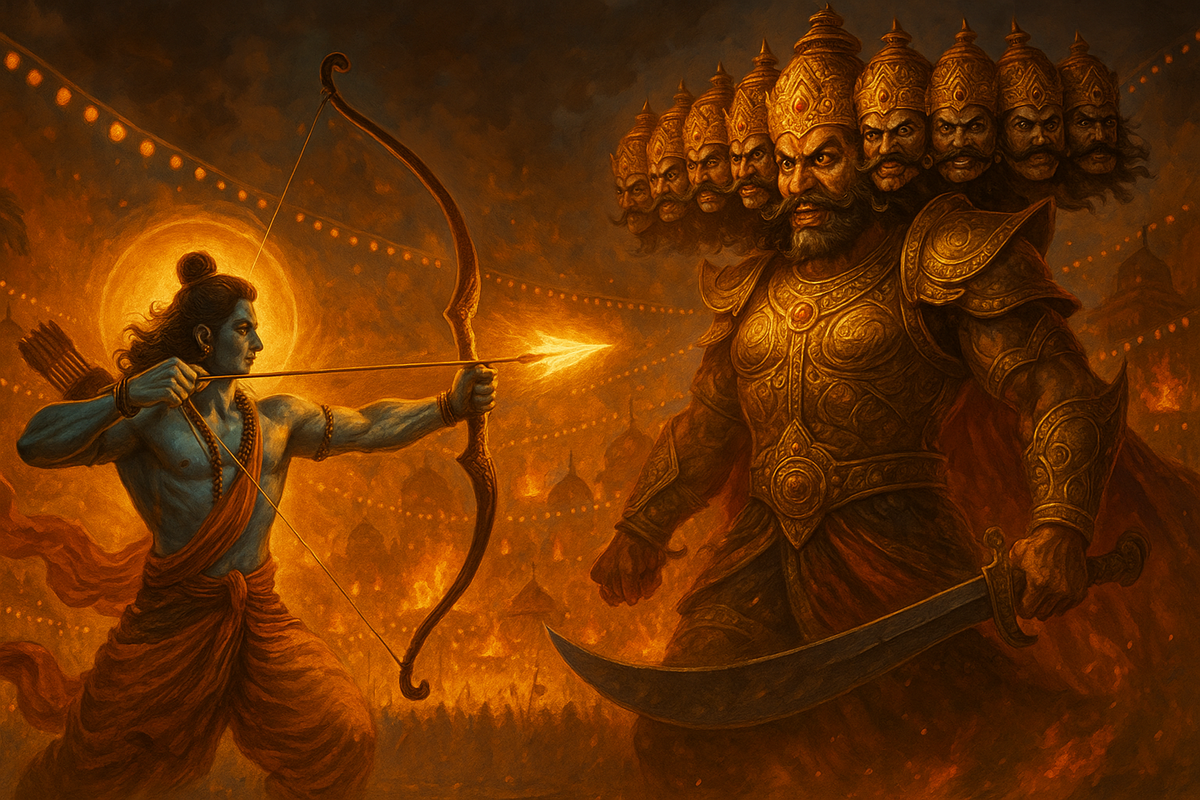Top 10 Facts About Vijayadashami 2025 and Its Significance

Vijayadashami, or Dussehra, is a revered festival in Hinduism that represents the victory of good over evil and is commemorated with great enthusiasm and devotion in all parts of India. Vijayadashami, which also marks the end of Navratri ( a nine day festival of worshipping goddess Durga), is considered as an auspicious time for embarking on new spiritual journeys.
Here are ten interesting facts about Vijayadashami 2025 date, observance, significance and celebrations:
1. Vijayadashami 2025 date and Timing
The date of Vijayadashami 2025 is Thursday October 2, 2025. The Dashami Tithi, the tenth day of Ashwin Shukla Paksha (waxing moon fortnight), starts on October 1st at 7:01 PM and ends on October 2nd at 7:10 PM. This date is considered by many as a highly auspicious time to start new ventures, buy new tools or vehicles, start a new educational endeavor, and do other spiritual sadhanas. One key Tithi is referred to during Vijayadashami afternoon for ceremonies known as Vijay Muhurat.
2. Victory of Good Over Evil
Vijayadashami marks the victorious outcomes of two powerful mythological stories:
1) Lord Rama represents the dharma of righteousness winning over the adharma of Ravana, Demon King of Lanka.
2) Goddess Durga defeats Mahishasura, the buffalo demon, after fiercely combating for nine days.
3. Vijayadashami 2025 Spiritual Importance
It represents the end of Navratri, a time of purification and inward understanding. It represents the triumph of inner light over ego, ignorance, and desire. Many spiritual practitioners begin new sadhanas (spiritual practices) on this day because it is said that the divine energies are at their peak and the blessings are easier to access. It is also said to be a great day for education and learning, especially in southern India, where young children are introduced to studies on this day in a ceremony called Vidyarambham.
4. The Conclusion of Navratri
The Vijayadashami festival is the end of Navratri, a nine-night festival honouring the Goddess Durga. To many, she is worshipped in each of her nine forms, and it is on the tenth day, Vijayadashami, she is said to have defeated Mahishasura, the buffalo demon. This day represents Shakti (divine feminine power), who provides her people and devotees security and safety, even though the evil is being destroyed.
5. Effigy Burning Traditions
One of the most renowned spectacles of Vijayadashami is the burning of the massive effigies of Ravana, often with his brothers, Meghnad and Kumbhkaran. The effigy burning is performed in an open ground, and those fires signify the downfall of ego, destruction of evil, and the end of the wicked. There are fireworks, and the grand spectacle of the Ram Leela is a sight to behold!
6. Vijayadashami 2025 Rituals, Regional Customs and Traditions
Various states celebrate Vijayadashami with different customs:
In Maharashtra, they exchange Shami leaves or Apta leaves, thought to symbolize gold, and wish each other “Subh Vijayadashami”.In Gujarat, they finish fiery nights of Garba and Dandiya, ending Navratri apex. In Tamil Nadu, they honor Saraswati, Durga, and Lakshmi during the last three days of Navratri, culminating on Vijayadashami.These regional customs bear witness to the diversity and yet, the sameness of Hindu culture.
7. Vijayadashami as the Most Auspicious Day for Learning and Arts
The day of Dussehra 2025 celebrations is the best day to start learning, education; music; arts; or a trade. Here is why! In many households in South India, parents teach their young children to write their first letter (normally "om") on rice or on mashed wet slate. Musicians and artists perform pujas on their instruments to signify reverence for their craft and profession. Students set their books and pens on the woolen cloth on top of their altar for blessing during Saraswati Puja, before returning to study for school on Vijayadashami day. Thus, Vijayadashami is a harmonic interplay between spiritual dedication to god and intellectual enlightenment.
8. Initiation of Formal Learning
Vidyarambham. For many children in Kerala and parts of Tamil Nadu, Vijayadashami is the day of Vidyarambham, a symbolic beginning of learning. Young children are taken by their elder family members to write the first letters, such as "Om" or "Hari Shree Ganapathaye Namah," in rice or sand. This is a sacred initiation into the learning world.
9. Varied Celebrations In Varied Regions
Vijayadashami has different meanings around India: In West Bengal, it is the day, the idol of Durga is immersed in rivers/ seas after the 5 days of Durga Puja. In Mysuru, Karnataka, the Jumbo Savari, the elephant procession through the palace district, showcases the grandeur of past royal traditions as it flows through the Government of Karnataka. In Maharashtra, the people share Apta leaves (the symbol of gold) and wish for abundance. This tapestry of regional diversity in India only illustrates the depth of rich culture, unifying a spiritual theme.
10. Symbol of Inner Conquest
In addition to a mythological battle on the battlefield, Vijayadashami symbolizes conquest over our inner demons; anger, jealousy, ego, greed, ignorance. Vijayadashami invites a longer look at our self-improvements, ethical living, and spiritual progress.
Dussehra 2025 celebrations on 2nd October are not only a celebration, they are a chance for reconciliations in our hearts and surroundings. With beautiful marches, symbols, and the reputation of spirit it creates, it then binds millions of people together in India and the world.
Explore More:
